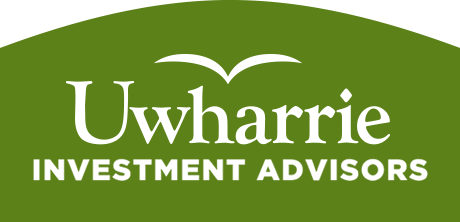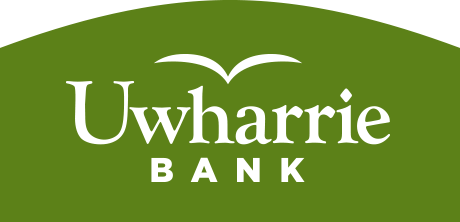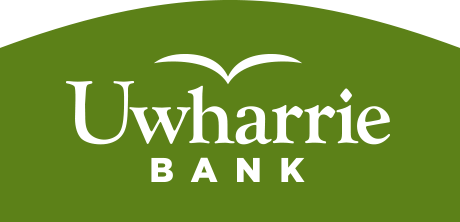Christy D. Stoner, AIF®, President and CEO of Uwharrie Investment Advisors offers her quarterly perspective on current economic and market events. We are dedicated to your success and look forward to working alongside you to see your goals achieved. Learn more about our advisors.
Autumn (2025, Q3)
We are witnessing a financial landscape that strikes a balance between resilience and caution as we enter the fourth quarter of 2025. On the one hand, the U.S. economy continues to show signs of stability, with real GDP expected to grow, albeit at a slower pace than in recent years; consumer spending remains a source of support, and business activity has not declined significantly. On the other hand, the forces of inflation, interest rate pressure, global trade uncertainty, and softer labor market undercurrents are all contributing to a more complicated environment. 1
The Federal Reserve recently adjusted its policy stance, reducing interest rates in response to signs of cooling inflation and softer labor market data. While this move marks a shift in tone, the Fed has emphasized that any future rate decisions will remain guided by evolving economic indicators – not by market expectations. In this environment, fixed-income markets have generally provided stability within diversified portfolios, even as the traditional relationship between stocks and bonds has remained less predictable due to overlapping macroeconomic pressures. 2
On the global front, the story is no simpler. While some international economies are showing pockets of strength, overall growth remains uneven, and downside risks persist. Trade policy remains a wildcard, supply‑chain fragilities persist, and inflation remains elevated in many corners of the world. These global dynamics add a layer of complexity to portfolio planning, underscoring the importance of broad awareness and flexibility. 3
Amid all of this, market volatility should not surprise us – it is to be expected. The real question is how you position your portfolio and your mindset for the journey. A disciplined approach remains our guiding principle. That means staying aligned with your long‑term objectives, avoiding reactionary moves triggered by headline noise, and maintaining diversification that reflects both your risk tolerance and your time horizon.
In times like these, when markets feel unsettled and headlines shift quickly, we find it grounding to return to what matters most: relationships, resilience, and shared purpose. As we approach the end of the year, we are particularly mindful of the values that guide our work – not only in managing portfolios, but also in serving our clients. That spirit carries into the holiday season. This year, our holiday giving will support local nonprofits and families in need – honoring you, our valued clients, by extending kindness and hope where it is most needed.
Our team remains committed to helping you navigate these conditions with care and perspective. Whether you are revisiting your financial plan, evaluating your portfolio mix, or simply seeking clarity during this time of change, we welcome the opportunity to connect. Thank you for your continued trust and partnership. It remains our privilege to support you through every stage of your financial journey. We wish you and your loved ones a joyful holiday season and a new year filled with peace, purpose, and renewed possibility.
Sources
- Philadelphia Fed Survey of Professional Forecasters: “Real GDP expected to grow at an annual rate of 1.3% in Q3 2025.”
- Reuters, “Federal Reserve cuts interest rates by 25 basis points, signals data-driven path forward,” September 2025.
- Deloitte U.S. Economic Forecast: While tariff pressure has eased somewhat, growth remains subdued with modest real consumer spending growth expected.
Recent Newsletters
The views expressed represent the opinion of Uwharrie Investment Advisors. The views are subject to change and are not intended as a forecast or guarantee of future results. This material is for informational purposes only. It does not constitute investment advice and is not intended as an endorsement of any specific investment. Stated information is derived from proprietary and nonproprietary sources that have not been independently verified for accuracy or completeness. While Uwharrie Investment Advisors believes the information to be accurate and reliable we do not claim or have responsibility for its completeness, accuracy or reliability. Statements of future expectations, estimates, projections and other forward-looking statements are based on available information and Uwharrie Investment Advisors’ view as of the time of these statements. Accordingly such statements are inherently speculative as they are based on assumptions that may involve known and unknown risks and uncertainties. Actual results, performance or events may differ materially from those expressed or implied in such statements. Investing in equity securities involves risks, including the potential loss of principal. While equities may offer the potential for greater long-term growth than most debt securities they generally have higher volatility. International investments may involve risk of capital loss from unfavorable fluctuation in currency values from differences in generally accepted accounting principles or from economic or political instability in other nations. Past performance is not indicative of future results.
Advisory products and services are offered by Investment Advisory Representatives through Uwharrie Investment Advisors, a Registered Investment Advisor and subsidiary of Uwharrie Capital Corp and an affiliate of Uwharrie Bank.
Retail brokerage and insurance products are offered by Registered Representatives through Private Client Services, LLC. FINRA and SIPC member. Private Client Services and Uwharrie Capital Corp along with its affiliates and/or subsidiaries are separate, distinct, and unaffiliated entities. It is important to note that the securities and insurance offered are: NOT BANK DEPOSITS AND NOT INSURED BY THE FDIC OR ANY FEDERAL GOVERNMENT AGENCY – NOT OBLIGATIONS OF OR GUARANTEED BY ANY FINANCIAL INSTITUTION – SUBJECT TO RISK AND MAY LOSE VALUE. Risk(s) will vary depending on investment made by the client. A Uwharrie Investment Advisor Representative will review these risk(s) with the client prior to investing.
Customer Disclosures and Client Relationship Summary (Form CRS)




